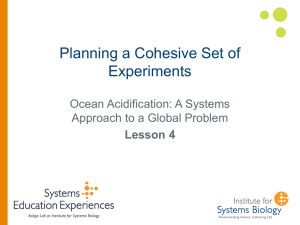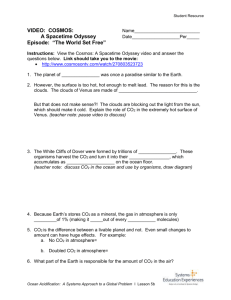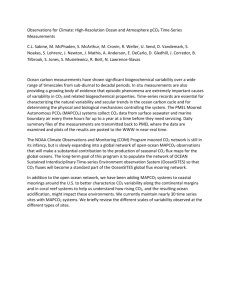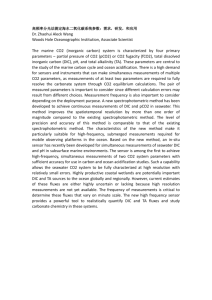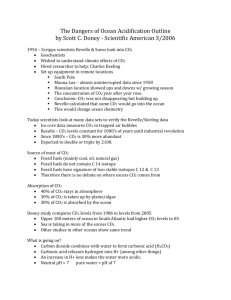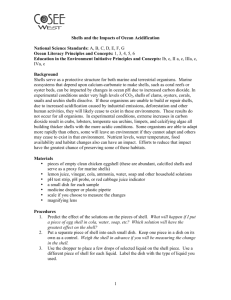Teacher`s Guide to Student Experiments document
advertisement
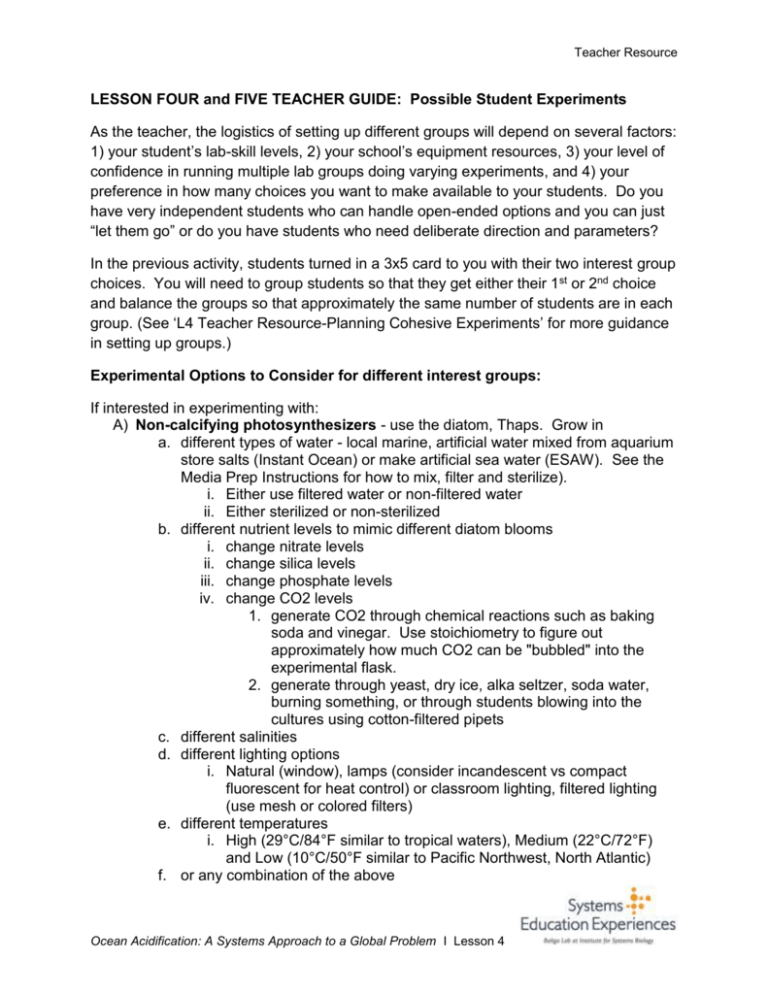
Teacher Resource LESSON FOUR and FIVE TEACHER GUIDE: Possible Student Experiments As the teacher, the logistics of setting up different groups will depend on several factors: 1) your student’s lab-skill levels, 2) your school’s equipment resources, 3) your level of confidence in running multiple lab groups doing varying experiments, and 4) your preference in how many choices you want to make available to your students. Do you have very independent students who can handle open-ended options and you can just “let them go” or do you have students who need deliberate direction and parameters? In the previous activity, students turned in a 3x5 card to you with their two interest group choices. You will need to group students so that they get either their 1st or 2nd choice and balance the groups so that approximately the same number of students are in each group. (See ‘L4 Teacher Resource-Planning Cohesive Experiments’ for more guidance in setting up groups.) Experimental Options to Consider for different interest groups: If interested in experimenting with: A) Non-calcifying photosynthesizers - use the diatom, Thaps. Grow in a. different types of water - local marine, artificial water mixed from aquarium store salts (Instant Ocean) or make artificial sea water (ESAW). See the Media Prep Instructions for how to mix, filter and sterilize). i. Either use filtered water or non-filtered water ii. Either sterilized or non-sterilized b. different nutrient levels to mimic different diatom blooms i. change nitrate levels ii. change silica levels iii. change phosphate levels iv. change CO2 levels 1. generate CO2 through chemical reactions such as baking soda and vinegar. Use stoichiometry to figure out approximately how much CO2 can be "bubbled" into the experimental flask. 2. generate through yeast, dry ice, alka seltzer, soda water, burning something, or through students blowing into the cultures using cotton-filtered pipets c. different salinities d. different lighting options i. Natural (window), lamps (consider incandescent vs compact fluorescent for heat control) or classroom lighting, filtered lighting (use mesh or colored filters) e. different temperatures i. High (29°C/84°F similar to tropical waters), Medium (22°C/72°F) and Low (10°C/50°F similar to Pacific Northwest, North Atlantic) f. or any combination of the above Ocean Acidification: A Systems Approach to a Global Problem І Lesson 4 Teacher Resource B) For the Marine Calcifying Organisms Interest Group. a. Complete a shell dissolution lab i. Use coral chunks, shells from oyster, sand dollar, clam or urchin shell , bones, egg shell, coral sand, snail shells, calcium carbonate sand, chalk, etc. ii. Use various acidic options for gathering data on the effect on these shells. (see list above for how to different ways of getting CO2 into the cultures, or use other acidic substances). b. Use other living animals either alone for experimentation or with Thaps, such as Oyster spat, Brine Shrimp or Aquarium Snails (from the pet store). Please note though, it is not recommended that students use freshwater snails in a saltwater media. Though they can do a freshwater experiment – it is very interesting to explore the buffering capabilities of freshwater verses marine water. C) For the Island Nations groups and the high combustion interest groups, any of the above can be done as related to what they would like to show for the subgroup that is important to them and their group. Also, there are many physical science/chemistry questions to explore, such as: Just how much can the pH of marine water change (because it is buffered)? If I add CO2 to marine water, how low does the pH go before it stabilizes and/or gets to a point of equilibrium? Also, see the salinity temperature, CO2 experiments in the folder within Lesson 5 for more ideas. Also, as a reminder, it's important for students to think of a sub-question under the main question that is their own. The main question is: What effect does the increasing atmospheric CO2 have on the ocean and its subsystems? Their sub-question can be something such as, “What effect does the increasing atmospheric CO2 have on diatoms grown at room temperature, in filtered Puget Sound water that is abundant in nitrate, silica, and phosphate?” They should also think specifically about what they can measure (i.e. what outcome will you be hoping to observe or measure, what have you measured in previous labs, how will you know what you know?) Possible student answers: pH, amount of CO2, source of CO2, nutrient levels, rate of shell dissolution, mass, temperature, salinity, population count, pigments present through chromotagraphy, optical density with spectrophotometers or fluorometers, etc.. Ocean Acidification: A Systems Approach to a Global Problem І Lesson 4
